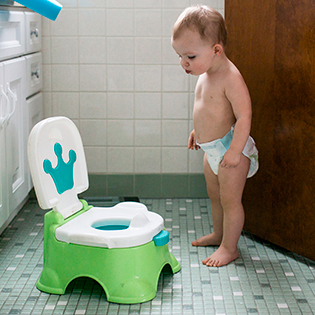When I adopted my son nearly 18 years ago, the company where I worked had no paid family leave policy for new dads. So I took eight weeks of unpaid but job-protected time off using the Family and Medical Leave Act (FMLA). Most of my work colleagues questioned why I needed extended time away from work.
Research shows only 67% of first-time fathers in the United States take some form of leave from work after the birth of their child, compared to 96% of mothers.[1] Deeply ingrained cultural beliefs often make it seem as if a person who carries and births a child has a greater need for bonding time with a baby than a non-birthing parent. And unlike many other nations around the world, the United States still doesn't offer paid parental leave to both birthing and non-birthing parents.
But the tide is starting to turn. More companies and states have recently rolled out more inclusive paid family leave policies that cover all types of parents.
"Over the last six years, there have been more policies of paid leave passed in U.S. states than in the previous 50 years," says David McKenna, a staff attorney specializing in employment law at Greater Boston Legal Services.
Because these developments have happened mostly at a state and company level, navigating paid leave as a non-birthing parent can still feel pretty complicated or even frowned upon. Here's what you need to know if you're about to face this patchwork system yourself as a non-birthing parent.
Does the Family and Medical Leave Act include non-birthing parents?
Enacted by the U.S. Congress in 1993, the Family and Medical Leave Act (FMLA) provides up to 12 weeks of job-protected leave for eligible employees.[2] It applies to a variety of family and medical situations, including the birth, adoption or foster care placement of a child. Under this federal law, both birthing and non-birthing parents can take FMLA leave (like I did).
Read Next
There are some important caveats: FMLA only applies to companies with more than 50 employees within a 75-mile radius — and only the employees who've worked for their employers for at least 12 months, McKenna says.
Plus, while FMLA's guarantee of job protection is hugely beneficial, the leave is entirely unpaid. Many working families simply can't afford to forgo a paycheck to care for a child.
Can non-birthing parents get paid parental leave?
Without a uniform federal program in place, paid parental leave is often at the discretion of employers and states.[3] That means the length of leave and pay can vary widely.
Company-sponsored paid family leave isn't very common for blue-collar, freelance and gig workers, who often need support the most.[4] According to the Bureau of Labor Statistics, only 27% of private-sector companies (or about 1 in 4) provide some form of paid family and medical leave.[5]
Meanwhile, state-sponsored mandatory paid family leave programs apply to almost every employee working there, with fewer exceptions. "As a result, way more people qualify for [state-sponsored] paid family and medical leave than FMLA," adds McKenna.
Which states offer paid leave for non-birthing parents?
Currently, 13 states plus the District of Columbia have passed mandatory paid family leave laws that include non-birthing parents:[6]
- California
- Colorado
- Connecticut
- Delaware (effective in 2026)
- District of Columbia
- Maine (effective in 2026)
- Maryland (effective in 2026)
- Massachusetts
- Minnesota (effective in 2026)
- New Jersey
- New York
- Oregon
- Rhode Island
- Washington
It varies, but state-sponsored family bonding leave typically lasts 12 weeks. (Birthing parents often take some additional medical leave.)
Typically, financial benefits are set as a percentage of your income. All states cap these benefits at a maximum weekly amount, which adjusts annually — usually in proportion to the state's average wages or inflation.
If you live in one state but work in another, you're eligible for the program in the state where you work. "Employers deduct contributions [to state programs] from your paycheck," says McKenna. "You can see on each paystub where the employer is making those contributions."
New and expecting parents should regularly check the laws of the state in which they live to understand eligibility requirements, benefit amounts and other important details. And since more and more states implement funded family leave programs each year, it's worth checking your state's official website even if it isn't on the list right now.
Can non-birthing parents use short-term disability insurance to get paid leave?
For non-birthing parents, the short answer is no. Short-term disability insurance is designed to replace a portion of your income when you're unable to work due to illness or injury; some birthing parents can use a short-term disability policy to fund part of their parental leave.
"Caring for a child is not a disabling medical condition like giving birth to a child is," says McKenna.
What other programs and benefits can non-birthing parents use?
Here are a few other ways non-birthing parents can access paid leave — or create an (albeit imperfect) substitute for it:
- Federal Employee Paid Parental Leave (FEPLA): Since October 2020, eligible federal workers can receive up to 12 weeks of paid parental leave to care for a new child.
- U.S. military parental leave: The U.S. military offers parental leave policies for non-birthing parents that can last different lengths of time based on the service branch and the individual situation.
- Unemployment benefits: In some cases, parents who lose their jobs due to the birth or adoption of a child might qualify for state unemployment benefits.
- Job-protected sabbatical: Some private sector and non-profit organizations, particularly those with union-negotiated benefits, provide unpaid or partially paid sabbaticals, which a new parent may use to care for a child.
How to get parental leave as a non-birthing parent
Now that you know the lay of the land, here are some tips from legal experts and non-birthing parents on what to do next:
Understand what's available
Knowing what kind of support is available to you at the federal, state and employer level is an important first step. Read up on the specific parental leave policies that apply to you to create your bonding leave plan, and make sure to pay close attention to — including eligibility requirements, duration and pay maximums. Ask for a copy of your employee handbook if you don't have one already.
Aaron Hopwood, a designer who lives and works in northwest Arkansas, says as soon as he and his wife were matched for adoption with their second child, he immediately started researching his leave options.
"My company's policies had just been revised," recalls Hopwood. Before the policy change, fathers had minimal leave benefits, but with the new policy, "not only was it 12 weeks for paternity leave, but that applied equally to adoption. There was no separate clause for an adoptive parent," says Hopwood.
Communicate effectively and early
Inform your employer as soon as possible about your intent to take leave and for how long. Most corporate and state-sponsored programs require at least 30 days notice to process.
By clearly outlining how long you'll be out and why, you can smooth the transition and also help prepare for your return. Documenting your communications, whether it's through texts, e-mails or written notes, is important to ensure everyone is aligned and in case any questions arise. "Always try to have something in writing confirming what the conversation was," says McKenna.
Apply for bonding benefits
If you've reviewed your employee handbook and have determined that you're eligible to get time off through your employer's benefits program, meet with human resources to give them a heads-up and ask them if there's anything specific you need to do in order to take advantage of the paid leave.
The arrival of a new child is a qualifying event for the vast majority of benefits programs. Your company HR partner should be able to guide you through the necessary paperwork. Required documentation can vary — it might include a birth certificate or other medical records.
If you're applying for state-sponsored support, visit the family and medical leave section of your state's official website to learn what's available. (See the list of states with programs above.) The paperwork can vary, but most states require you and your employer to fill out "Requests for Paid Family Leave" forms.
Protect your job
While there is no specific law explicitly protecting against discrimination based on parental or family status, some instances of parental status discrimination might fall under the umbrella of sex discrimination, which is prohibited by Title VII of the Civil Rights Act of 1964.[7]
Additionally, the Equal Employment Opportunity Commission (EEOC) has issued guidance on unlawful disparate treatment of workers with caregiving responsibilities.[8] While not a specific law, this guidance shows how discrimination against caregivers might violate other anti-discrimination laws.
If you think you've been discriminated against because of your parental or family status, you may want to seek counsel from an employment lawyer — there are legal aid services that are inexpensive or free of charge for eligible clients. Additionally, many larger companies provide options for employees to report discrimination or ethics violations without fear of retaliation.
No matter how someone becomes a parent, whether through birth, adoption, surrogacy or foster care, all parents play crucial roles in the healthy development of their child. By supporting continued legal reform, all families, regardless how their children arrive, can get the equal parental leave rights they deserve.













































 Trending On What to Expect
Trending On What to Expect





